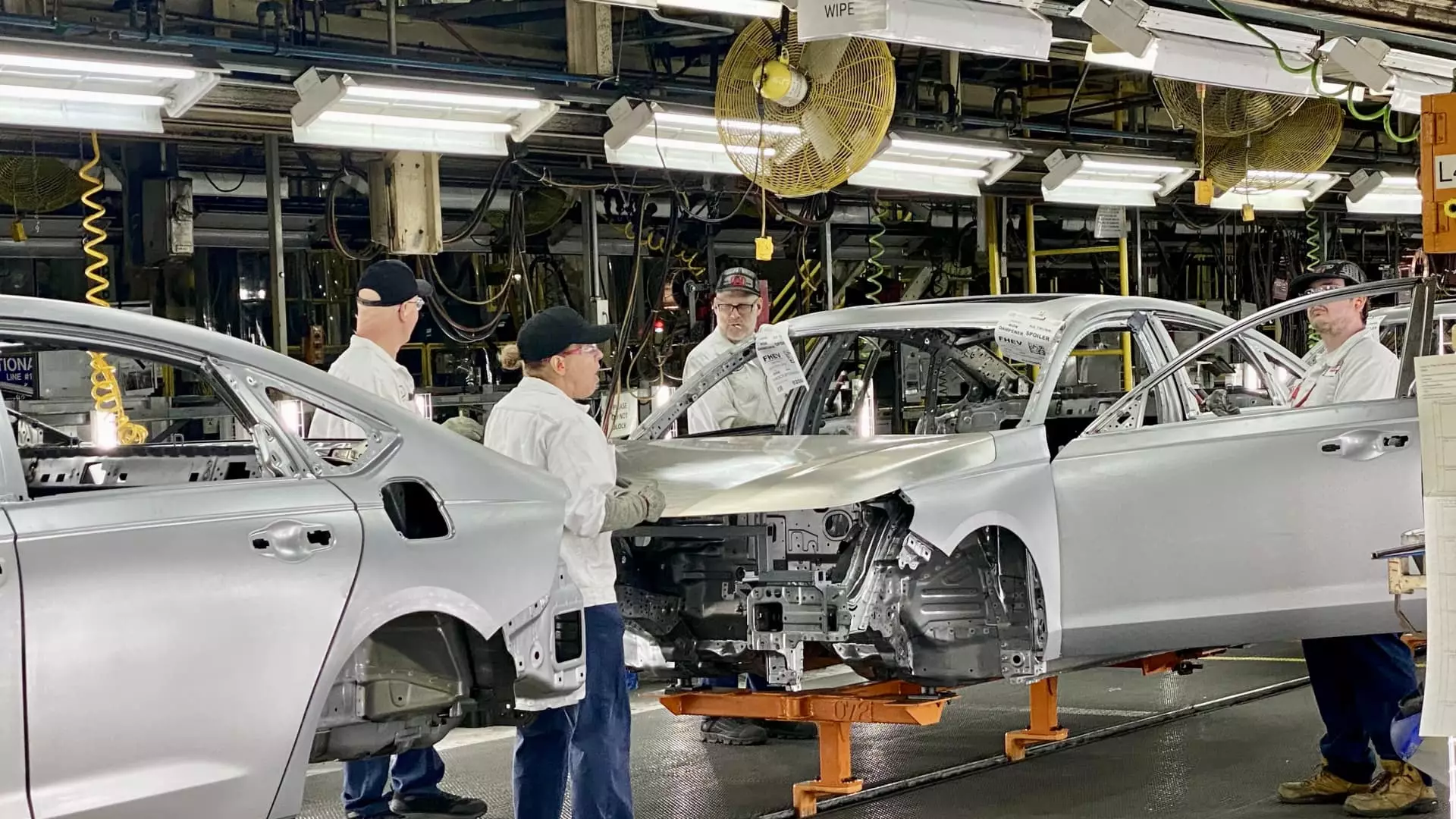In an unprecedented move, Honda Motor Co. is substantially investing in Ohio to establish a cutting-edge manufacturing base for electric vehicles (EVs). With an enhanced investment estimated at over $1 billion, up from the initial $700 million, Honda’s commitment signals a transformative era in its operational approach. These developments come at a time when many automakers are emphasizing sustainability and domestic production, and Honda is keenly positioning itself in this evolving landscape.
The initiative is characterized by the introduction of six “giga presses,” technologies that have gained fame through Tesla’s use, aimed at revolutionizing how electric vehicle components are produced. These presses allow for the megacasting of parts, which Ford and Tesla have championed to streamline manufacturing processes. Additionally, Honda is implementing an innovative cell manufacturing system tailored for its forthcoming electric vehicle battery cases. This step not only strengthens production capabilities but also signifies a strategic pivot toward environmentally sustainable practices.
The heart of this extensive investment is the Marysville Auto Plant, which will serve as Honda’s flagship for global manufacturing. The facility is set to broaden its capabilities to assemble traditional internal combustion vehicles, while also integrating hybrid and fully electric models on the same assembly line. Honda’s North American lead for battery-electric vehicles, Mike Fischer, has emphasized that this Ohio hub will establish the “global standard for EV production,” blending innovative technology with adept production processes.
Historically, Honda’s significant manufacturing advancements would typically originate from Japan, later cascading to U.S. facilities. However, this shift to prioritize Ohio signifies a break from tradition, aligning with wider economic policies that favor domestic manufacturing under the Biden administration. This strategic pivot not only strengthens Honda’s position in the American market but also addresses potential economic vulnerabilities associated with tariffs and international production dependencies.
As Honda strives to ramp up production at its Marysville plant to accommodate an annual capacity of roughly 220,000 vehicles, it’s imperative to note the company’s expansive vision for EVs. Currently producing several Honda and Acura vehicles, the facility expects to debut the all-electric Acura RSX crossover within the year. This model represents Honda’s first foray into producing electric vehicles domestically, marking a significant milestone for the automaker.
Despite being somewhat late to engage fully in the electric vehicle market, Honda has made strides with vehicles like the Prologue and Acura ZDX, produced in a collaboration with General Motors. The imminent launch of new models—including the Honda 0 SUV and Honda 0 Saloon, which were showcased at CES—underlines Honda’s intent to not just catch up but potentially lead in certain EV segments moving forward.
Efforts are also being directed toward producing aluminum battery packs at Honda’s engine complex in Anna, Ohio. This facility, Honda’s largest engine production site globally, has evolved significantly since its establishment, illustrating the company’s commitment to innovation and production efficiency. With the integration of aluminum as a primary material for battery packs, Honda’s approach not only positions them to meet growing EV demands but also fosters a circular economy through recycling and waste reduction.
Reimagining Manufacturing for the Future
Honda’s investment in new “flexible manufacturing cells” marks a fundamental rethinking of conventional automotive production. Instead of adhering to a linear assembly line, these designated zones allow for parallel processing, ensuring that the efficiency of the main production line is unaffected by any slowdowns encountered during battery assembly. This innovative structure is expected to enhance operational resilience while adapting to the increasing complexity of EV manufacturing.
Furthermore, Honda’s initiative reflects a broader ambition to achieve carbon neutrality by 2050, focusing on three pivotal areas: carbon reduction, clean energy adoption, and resource circulation. Unlike some competitors that might have retreated from ambitious sustainability goals, Honda remains committed to selling exclusively zero-emission vehicles by 2040, showcasing their unwavering determination to lead in environmental responsibility.
With their Ohio-based investment and manufacturing overhaul, Honda is not only adapting to changes within the automotive industry but is also positioning itself as a formidable competitor in the electric vehicle arena. The strategic investments and innovations introduced during this transitional period signal a new chapter for Honda—a chance to redefine manufacturing standards while aligning with global sustainability goals. By embracing a comprehensive reimagination of production processes, Honda is actively working toward establishing itself as a leader in a rapidly evolving marketplace centered on electrification and environmental stewardship.

